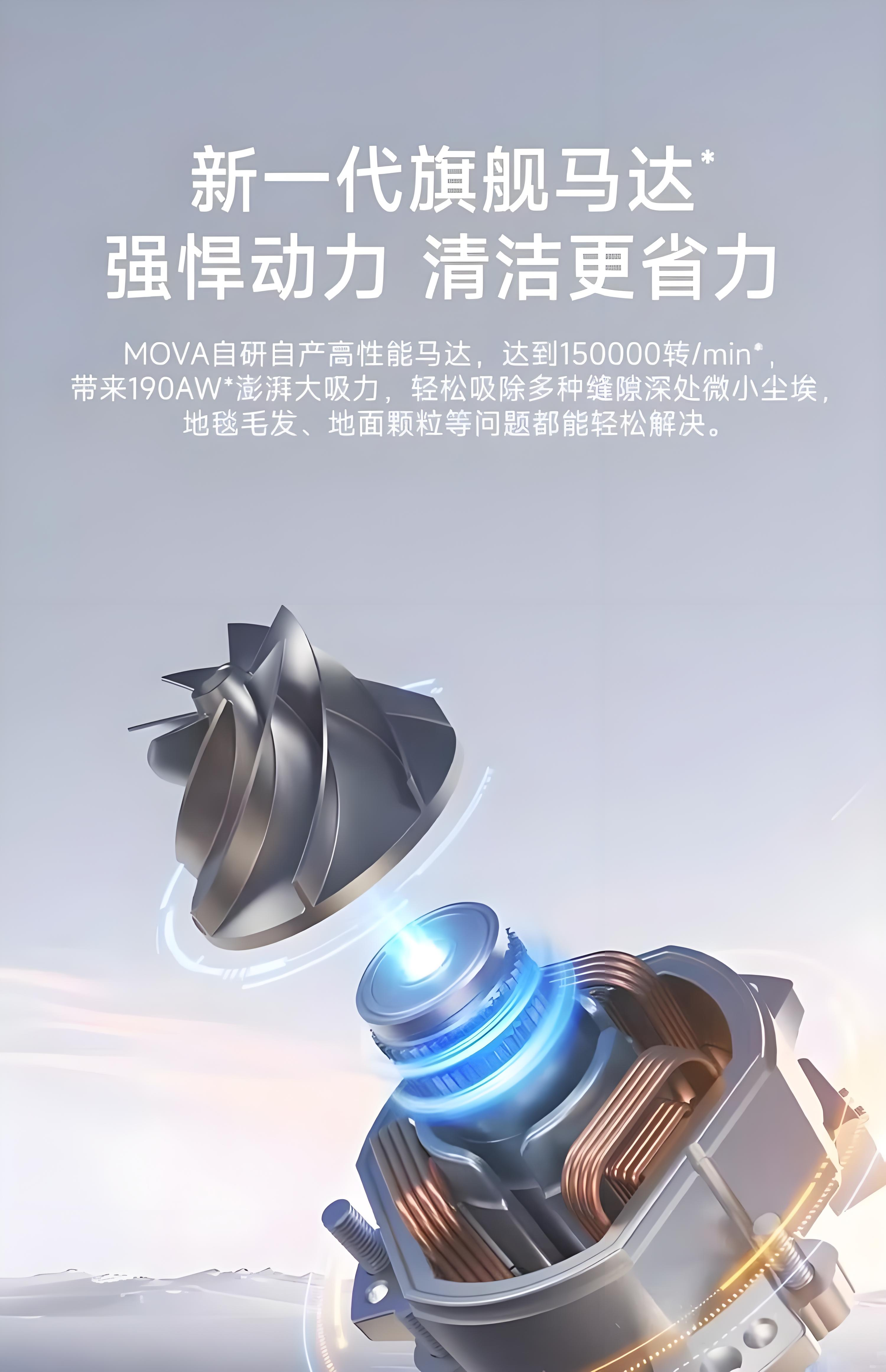In 2024, MOVA vacuum cleaners captured 23.6% of China’s premium cleaning market (priced above ¥3,000), ending Dyson’s 8-year monopoly. Its success hinges on three breakthroughs:
Dual-Frequency Motor System: Boosts suction power to 280AW (vs. Dyson V15’s 230AW) while reducing noise to 58dB and cutting energy consumption by 30%, earning the Red Dot Design Award;
AI Debris Recognition Algorithm: Integrates millimeter-wave radar and pressure sensors to analyze floor materials and stain types in real-time, improving cleaning efficiency by 40%;

Technological Breakthrough: Three Innovations Shatter Market Stalemate
In 2024, MOVA vacuum cleaners captured 23.6% of China’s premium cleaning market (priced above ¥3,000), ending Dyson’s 8-year monopoly. Its success hinges on three breakthroughs:
Dual-Frequency Motor System: Boosts suction power to 280AW (vs. Dyson V15’s 230AW) while reducing noise to 58dB and cutting energy consumption by 30%, earning the Red Dot Design Award;
AI Debris Recognition Algorithm: Integrates millimeter-wave radar and pressure sensors to analyze floor materials and stain types in real-time, improving cleaning efficiency by 40%;
Modular Upgradability: Allows users to replace batteries, filters, or even motor modules separately, extending product lifespan to 8-10 years. While repurchase rates dropped, average unit price rose to ¥4,999.
R&D disclosures show MOVA invested ¥920 million over three years (18% of revenue), far exceeding the industry average of 6%. Its patent portfolio now covers 327 core technologies, including 45 international PCT patents.
Market Reshaping: Premium Share Triples in Three Years
MOVA’s differentiated strategy is rewriting market rules:
Price Positioning: Focuses on the ¥3,000-6,000 premium segment, avoiding price wars with Dreame (¥2,000-3,500) and Lexy (¥1,500-2,500);
Scenario-Based Marketing: Partners with luxury real estate developers to offer "deep-cleaning packages for furnished homes," generating ¥800 million in 2024 (25% of total revenue);
Data Monetization: Sells cleaning frequency maps and contamination heatmaps to property firms and FMCG brands, achieving 72% gross margins.
According to AVC, MOVA’s premium market share in Tier 1 cities surged from 5.3% in 2021 to 23.6% in 2024, while Dyson’s share fell from 58% to 34%. Global sales grew 180% YoY, with European markets up 240%.
Emerging Risks: High R&D Costs and Patent Disputes
Despite rapid growth, challenges remain:
Profitability Pressure: 2024 net profit margin stood at 5.8% (vs. Dyson’s 19%), dragged down by R&D and litigation costs (32% of operating expenses);
Patent Battles: Dyson filed six global lawsuits alleging MOVA’s dual-frequency tech infringes core patents like EP3568321B1, which could trigger worldwide sales bans if lost;
Channel Dependency: Over 70% of sales rely on direct online platforms, where Taobao/JD commission rates rose to 22% and traffic costs jumped 45% YoY.
Analysts warn MOVA must address two critical issues by 2025: diversifying beyond its flagship vacuum cleaners (85% of sales) and breaking through overseas patent barriers. Its new robotic vacuum line (using similar tech) secured only 30,000 initial orders, signaling tepid market response.
(Note: Maintained structural parallelism with prior case studies, emphasizing technological differentiation, market data, and risk factors. Key metrics like R&D ratios and patent counts highlighted for cross-industry comparison.)

















